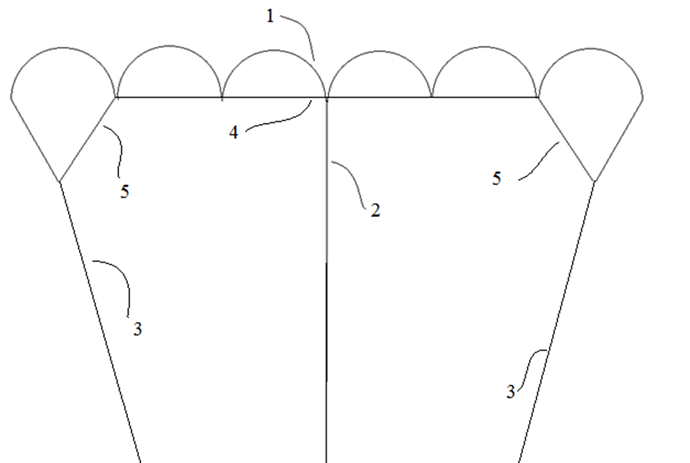I recorded on 08/21/2016 (H6EA1G8_152234) an unpublished design about tied wings (see also the video of tied opposite wings and central parachute; it would suffice to tie additional identical wings on each side):
This design concerned rather C-shaped semi-rigid wings. I forgot this for two reasons: no single C-shaped wing has ever flown to my knowledge; the second reason was not correct because I thought that the tied wing blade could have a huge span while it remained narrow, being not able to fill the swept area, forgetting that the narrowness could be compensated by the number of the tied wing blades. So gigantic rotors could be built by tying very small flexible wings.
@Rodread , concerning your method by removing “…the central parts and replace the wing to wing connection with tensile line…”: indeed the wing power is more fully used (about 2 times per wing area for a complete rotor compared to a rotor of Rotokite or mine with tied wings everywhere, and it is a proven method but at small scale. I do not know if entanglements could be avoided at high scale without a fine computerized control as for any dancing kite systems.
Indeed tensile lines are efficient but only in traction, while tying flexible wings on the full span provide a supplementary shape cohesion by wind force over the entire surface of the rotor, giving also the possibility to add some lift in the central part comprising the central parachute.
In some way tying wing of the full rotor would reproduce the classic configuration of a three-blade ground-based wind turbine where the central part also does not produce much power, although it produces lift for the AWES version.
Now concerning the Rotokite report on my previous comment, I think the table 4.2 page 50 is a bit optimist.
Peak Power Output Class 20 kW 1 MW
Nominal Wind Speed 9 m/s 9 m/s
Wingspan Of One Kite 6.5 m 46.2 m
Rotor Area 130 m2 6700 m2
Kite Weight 9 kg 654 kg
Elevation Angle 30◦ 30◦
Reel-Out Speed Coefficient 0.38 0.38
Partial Load Efficiency 0.33 0.33
Nominal Force 5800 N 290 kN
Induction Factor 0.9 0.9
Nominal Ouput Power 20 kW 1 MW
Nominal Tether Length 150 m 300 m
Tether Safety Factor 5 5
Tether Weight 3.7 kg 360 kg
Hover Power 80 W 4 kW
Drag During Reel-In 1.1 1.1
Area Reduction from Rotor Area Solidity x 0.05 Solidity x 0.05
Knowing that in reeling yo-yo mode the power coefficient (CP) cannot be higher than 0.15 (4/27, so 1/4 Betz limit as documented), that leads to a value of 439.857 kW, then 285.731 kW by taking account of cosine³ coefficient (0.65) with an elevation angle of 30 degrees as stated, then half due to recovery phase, so about 1/7 the value of 1 MW as stated. It is true that 9 m/s wind speed is rather a low nominal value.
